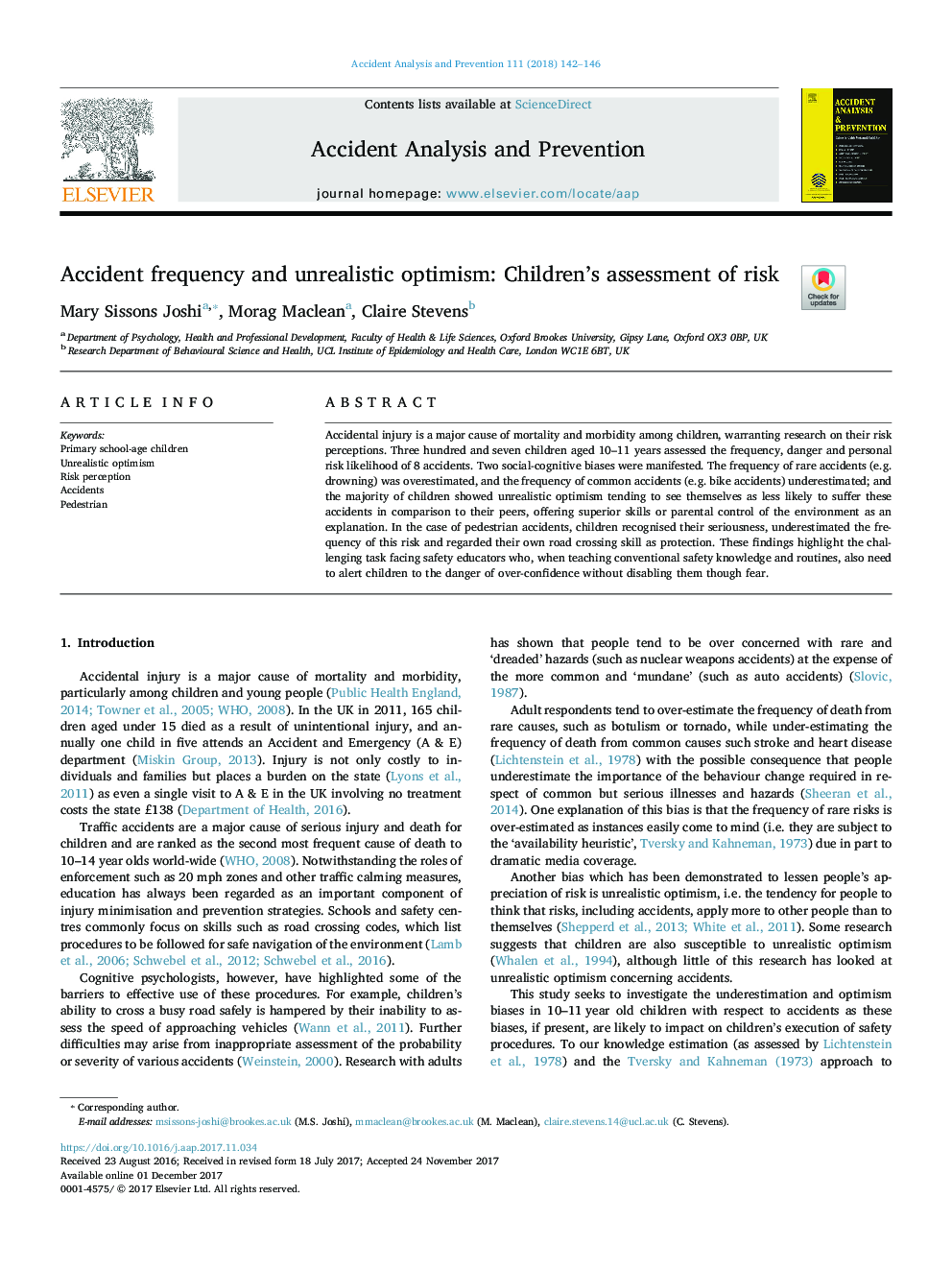| Article ID | Journal | Published Year | Pages | File Type |
|---|---|---|---|---|
| 6965257 | Accident Analysis & Prevention | 2018 | 5 Pages |
Abstract
Accidental injury is a major cause of mortality and morbidity among children, warranting research on their risk perceptions. Three hundred and seven children aged 10-11 years assessed the frequency, danger and personal risk likelihood of 8 accidents. Two social-cognitive biases were manifested. The frequency of rare accidents (e.g. drowning) was overestimated, and the frequency of common accidents (e.g. bike accidents) underestimated; and the majority of children showed unrealistic optimism tending to see themselves as less likely to suffer these accidents in comparison to their peers, offering superior skills or parental control of the environment as an explanation. In the case of pedestrian accidents, children recognised their seriousness, underestimated the frequency of this risk and regarded their own road crossing skill as protection. These findings highlight the challenging task facing safety educators who, when teaching conventional safety knowledge and routines, also need to alert children to the danger of over-confidence without disabling them though fear.
Related Topics
Physical Sciences and Engineering
Chemical Engineering
Chemical Health and Safety
Authors
Mary Sissons Joshi, Morag Maclean, Claire Stevens,
